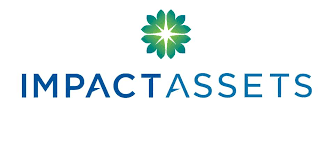 Impact investing has moved from the fringe toward the mainstream, but individual investors still have many moving parts and challenges to consider.
Impact investing has moved from the fringe toward the mainstream, but individual investors still have many moving parts and challenges to consider.
If you’re committed to impact as well as wanting to protect your financial future, you can attain various levels of financial return together with the generation of social and environmental impacts. And you can direct your resources toward not only providing for your own future, but the future of your children and community. Here are ten actions investors can take to help mobilize an impact investing strategy with confidence, from The ImpactAssets Handbook for Investors.
If you like this, subscribe here for more stories that Inspire The Future.
1. Fortune Favors the Prepared Mind
Good investing involves some level of luck—that the markets move up with you; that you select the right managers at the right time and so on—but the fact is good preparation can help you increase the odds you’ve made the right decisions at the right times for the right reasons. Rather than attempting to “time the market” looking to take advantage of short term ups and downs, remember to stay focused on your long term goals and plan for those goals through creating a sound strategy.
2. Impact Investing is Additive – Not Restrictive
Impact investing is about taking traditional, sober and conservative fundamental investing practice and augmenting it with considerations of social and environmental impact. At its best, it is taking what works about traditional investment practice and integrating it with considerations of “off balance sheet” risk and opportunity that may be identified by considering social and environmental factors that could effect your investment. And a good impact investing strategy may also include looking for opportunities to invest that optimize positive impacts for your community and our world.
3. Impact Investing is a Lens – Not an Asset Class
Impact investing is, simply put, a lens through which one approaches the full spectrum of options and asset classes in the market and for one’s portfolio. Therefore, impact investing is not an asset class; mistaking it for one does a disservice to the investor who may then be forced to compartmentalize the application of best practice. Rather, we should seek to let its practices and our pursuit of it flourish across the full spectrum of portfolio opportunities before us.
4. Define Your Process and Commit to Your Plan
Building upon investment practices of the mainstream, adhering to your plan while executing it in a flexible manner as you proceed, you will be able to responsibly manage your investment process and improve the possibilities of success.
5. Understand What Risk Means for You – Not the Investor Next to You!’
You may want to live on the edge or you may want to stick closer to the wall, but either way you alone must decide what is reasonable and what is the best approach for you. Listen to what other impact investors are talking about, understand how others are approaching their investment process—but never forget your goals, your level of risk and that your strategy is about what you want to do, not what others are promoting.
6. Impact Investing is an Evolving Field – Grow with It
This is the brave new world, be part of it along the way. Activated investors approaching impact across the full spectrum of their portfolio, demanding excellence and sustained value from the funds and companies they invest in, are well positioned to both benefit from and help in the creation of greater depth in the field of impact investing.
7. Start with What You Know And Learn – What You Need to Know
We have found that the ‘personal’ translates well as an onramp into impact investing. What do you care about? Why are you specifically motivated to approach impact investing? Is there a particular impact theme you have experienced or that has touched your life as an issue? Or is it a family member who is pushing you to engage in exploring it? Use the answers to those questions to help focus your approach.
8. If You Don’t Understand What The Investment Strategy Is – Don’t Invest!
Impact doesn’t trump a good business model, just as a good business idea is often less important than a good management team. If you can’t understand the fundamentals of why an investment is impactful, how it will make money and find its market, and which excellent people are going to be at the wheel… you shouldn’t invest!
9. Invest for Long Term Not Short Term Returns (both Financial and Impact)
Value is well correlated to patience and the pursuit of long term strategies. This applies to both impact and financial value creation for the investor and the world. Invest for the long term, but get going with a healthy dose of impatience in terms of putting the trains on the tracks of integrating impact as broadly as possible in your portfolio.
A dollar far off in the future is much less certain or more risky, with its buying power eroded by accumulating inflation. We should approach the time value of impact from a similar perspective. Positive impact is far more valuable now than later. The best fund managers and companies will increasingly deliver these to investors, if and as they understand them to be a “must have” requirement.
10. Don’t Judge a Book by Its Cover
As you explore the growing array of offerings before you, don’t get too wrapped up in whether or not something is called “impact.” What matters is not what someone says, but rather how an investment strategy is managed, what types of companies they actually invest in, the degree of intentionally and depth to their approach and your ability to assess the types of extra-financial, social and environmental value any given strategy advances. Remember: some folks who claim positive impact, don’t generate it and some who have never heard the word are actually creating real, sustainable value. Assess all those who claim to “do” impact investing and you be the judge of what they do—not what they say!
If you like this, subscribe here for more stories that Inspire The Future.




































